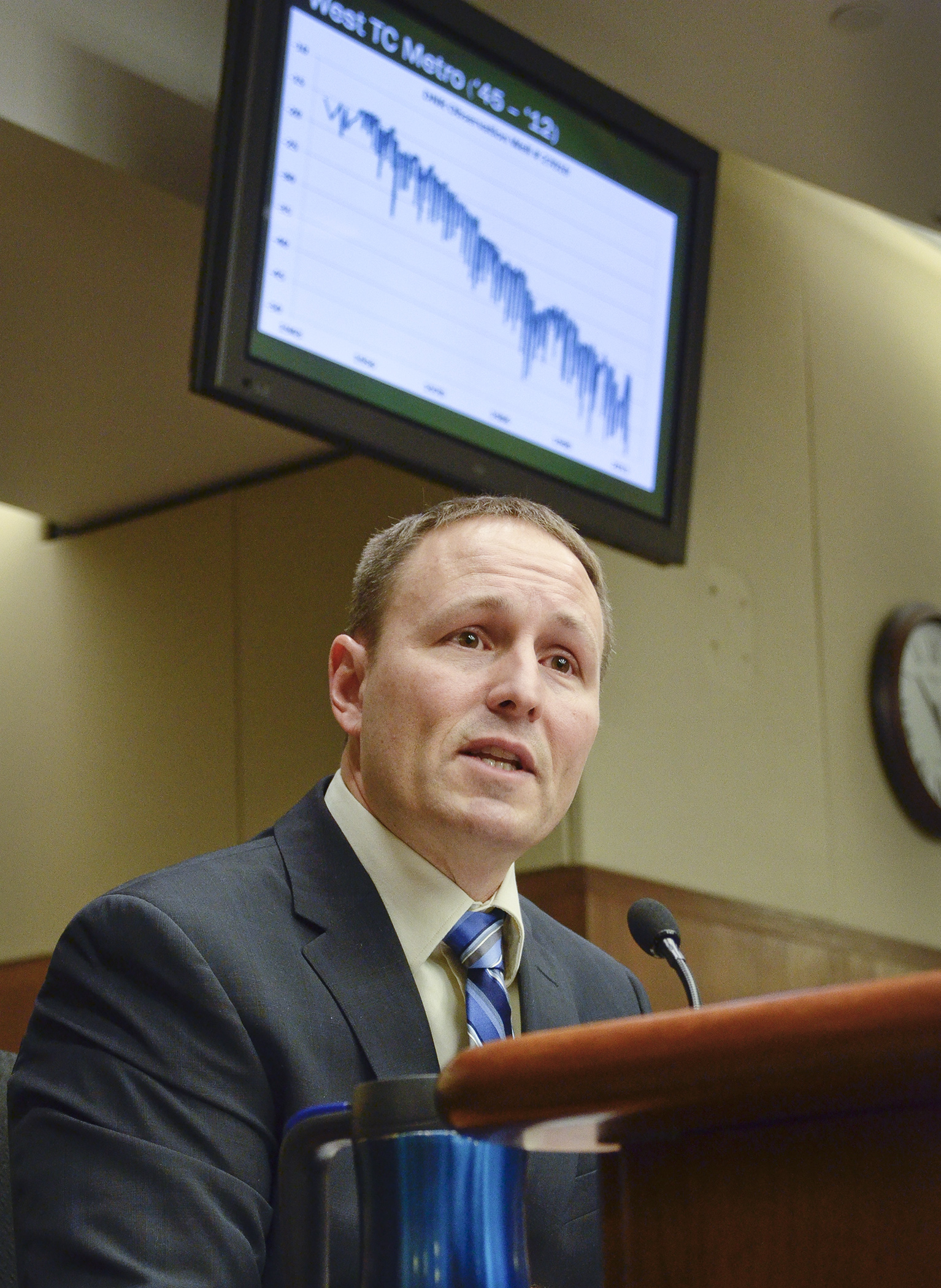Fixing state’s declining groundwater supply takes long term strategy

The threat to a sustainable groundwater supply in Minnesota is not imminent, but it is real and continues to grow. As one of those who testified about the problem before the House Agriculture Policy Committee Wednesday put it: Minnesota is in the urgency room rather than the emergency room.
“In the urgency room you get a little bit more time to analyze the situation, you do a little bit of triage, try to figure out where to focus your resources,” said Jason Moeckel. He is the inventory, monitoring and analysis section manager for Ecological and Water Resources Division of the Department of Natural Resources.
Groundwater management areas are one tool the state has begun using to perform that triage. A pilot program approved by the Legislature in 2012 established three GMAs, one in the metro area (North & East Metro region), and two in central Minnesota (Bonanza Valley and Straight River). These areas were chosen due to the concentrations of usage and concerns about future sustainability.
Moeckel said that annual groundwater usage in Minnesota increases by about 3 billion gallons each year. More than half the groundwater used is taken by municipal water supply systems for homes and businesses, while irrigation accounts for roughly 34 percent of the total.
Irrigation in the GMAs was of particular interest during the meeting as several Minnesota irrigators testified. Jim Anderson, who owns a family farm in the Bonanza Valley GMA and also serves on the advisory board for the pilot project, told the committee that without irrigation he could not stay in business.
Anderson said he’s committed to sustainable groundwater so his children can carry on irrigating as he’s done for the past 45 years. But he added that irrigators want to be involved in decisions that are made.
“As irrigators, we as local people, want to be a part of this,” Anderson said. “We don’t want the state, somebody from St. Paul, telling us what we need to do with our water. We want to be part of this whole process.”
Moeckel said the state would seek that input. The DNR is currently reviewing draft plans for the GMAs and the next step will be to go out for “broader public input” where people can learn more about them, ask questions and provide feedback.
“Our goal is that we will have gone through that process and have three plans that our commissioner can sign and say, ‘This is what I’m committing my agency to do for the next five years,’” Moeckel said.
Related Articles
Search Session Daily
Advanced Search OptionsPriority Dailies
Ways and Means Committee OKs proposed $512 million supplemental budget on party-line vote
By Mike Cook Meeting more needs or fiscal irresponsibility is one way to sum up the differences among the two parties on a supplemental spending package a year after a $72 billion state budg...
Meeting more needs or fiscal irresponsibility is one way to sum up the differences among the two parties on a supplemental spending package a year after a $72 billion state budg...
Minnesota’s projected budget surplus balloons to $3.7 billion, but fiscal pressure still looms
By Rob Hubbard Just as Minnesota has experienced a warmer winter than usual, so has the state’s budget outlook warmed over the past few months.
On Thursday, Minnesota Management and Budget...
Just as Minnesota has experienced a warmer winter than usual, so has the state’s budget outlook warmed over the past few months.
On Thursday, Minnesota Management and Budget...